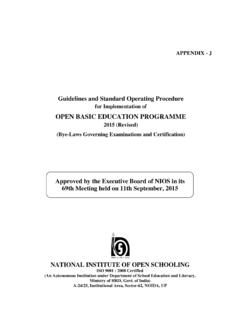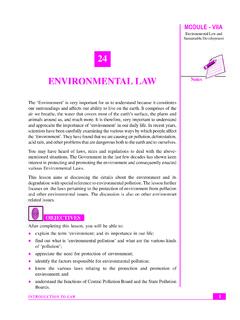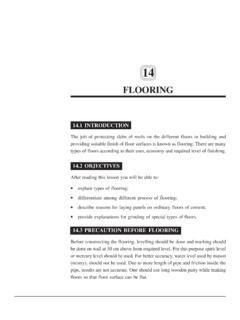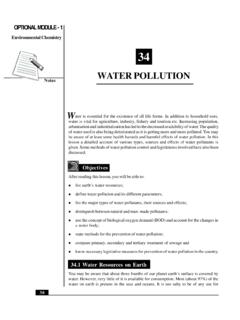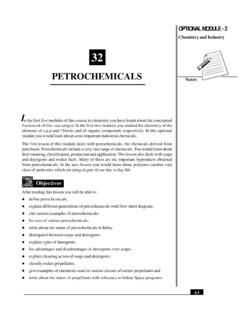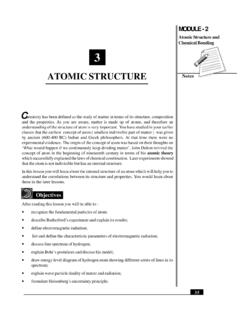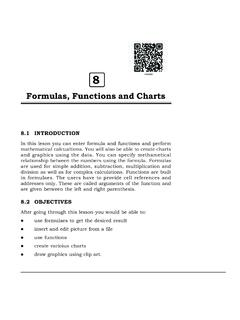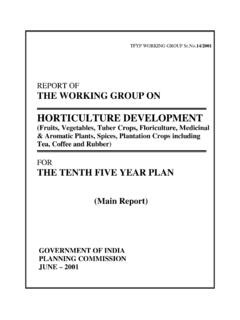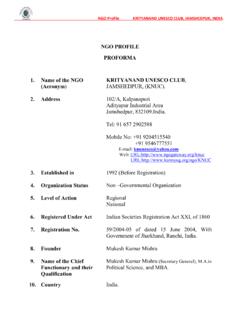Transcription of 30 LOCAL AREA PLANNING
1 LOCAL area PLANNING is a process of PLANNING that is concerned with resolving locallevel problems and issues. Its priorities include over all welfare of the people anddevelopment of the LOCAL area . Maintenance of social services and amenities,promotion in the quality and quantity of LOCAL products and services and keepingsurroundings and LOCAL environment clean and green are some of its continuousconcerns. In terms of size, it is the smallest PLANNING unit with reference to peopleand places. A PLANNING which is carried out through people s participation turnsout to be a dream of real situation reflecting continuous growth and developmentin the LOCAL area .
2 You will learn in more details about meaning and concepts oflocal area PLANNING , different approaches of LOCAL area PLANNING adopted in India sFive Year Plans and a few success stories of LOCAL area PLANNING studying this lesson, you will be able to:zrecall the terms like LOCAL area PLANNING , ecological and socio-economic basisof development;zexplain how PLANNING helps in using resources to meet the LOCAL needs;zcompare different approaches and their objectives which have evolved toundertake LOCAL area development over the different Five Year Plans;zidentify on a map different PLANNING areas in India and their unique needs;zexplain using maps how ecology, environment and resource utilisation arerelated to each other and managed for LOCAL area CONCEPT OF LOCAL area AND PLANNINGIn order to understand the concepts and approaches related to LOCAL area PLANNING ,we need to understand the terms that constitute the entire idea.
3 The term localarea is used variously in ecology, economy and society. It is a site specific issue, 30 local area planning 1 GEOGRAPHYN otesLocal area PLANNING 2 GEOGRAPHYMODULE - 10 ANotesLocal area Planningcommodity or community. In terms of attributes, LOCAL area is both a physical aswell as cultural attribute like landscape of an area , surroundings of a locality, localproducts, folk dances, handicrafts LOCAL area : Products, Forms and SitesThe attributes of a LOCAL area reflect strong bonds of association with the locationand people. With regard to non LOCAL area and people it reflects weakening bondsof association and growing variations. For example sea breeze, a LOCAL wind,exercises considerable effect along sea shore and it gets weakened away fromthe sea.
4 Some times LOCAL area product or identity becomes so popular andspecialized that it becomes demanding across places and regions. Sandles ofkolhapur, sandal sticks of Mysore, fireworks of Shivakashi, Naga Shawls, KashmiriPashmina, Varanasi silk sarees, Madhubani art, Kuchipuri dance etc. are some of 3 LOCAL area PlanningGEOGRAPHYMODULE - 10 ALocal area PlanningNotesthe LOCAL area products or specialities that are in great demand both from nationalas well as international markets. A well maintained locality with its clean and greenenvironments acts as a source of attraction to the non LOCAL people and acts as anideal for other places to follow. For example Shalimar Bagh (Srinagar), MughalGarden (Delhi), Valley of Flowers (Uttaranchal), Rockgarden (Chandigarh),Nagarjun Konda (Andhra Pradesh), Rajgir (Bihar), Kanya Kumari (Tamilnadu)etc.
5 Are the LOCAL area sites that present a sound balance of ecological and aestheticsignificance. A sense of pride and attachment to the LOCAL product, area and peopleis a source of unity and activity. It also leads to common understanding and , LOCAL areas may be mountainous, plateaus, plains, coastal, desert orwetlands. Functionally LOCAL areas may be pastoral agricultural, industrial, institutionalor service areas. In terms of habitations, LOCAL areas may be rural, urban, nomadicor tribal. LOCAL areas could be modern or traditional with regard to their socialsetup. Similarly, in terms of economic development LOCAL areas could be developedor less effort to devise ways and means to solve the problems of places and people istermed as PLANNING .
6 As a student we plan for studies, examinations and even forother routine works. We also get ourselves associated in finding solutions to thecommon problems at the LOCAL level where we work and live. Maintenance ofamenities and public utility services, sanitation, general health and education aresome of the most common problems faced by the LOCAL people. Since LOCAL areasare the smallest units of PLANNING , it is rather easier to find solutions to their problemswhich are also smaller and manageable in dimension. Most of the problems thatseek PLANNING and solutions are related to the ecological imbalances, economicdepressions and social tensions. To improve the general conditions of the peoplein a LOCAL area , provisions for basic social amenties and facilities need to be participation of LOCAL people helps in utilizing LOCAL materials, indigenousknowledge and maintaining infrastructure that are planned.
7 PLANNING also aims atimproving the quality of LOCAL environment through tree plantation , maintaining thelocal water pools like rivers, tanks, lakes etc. and managing the depletion of rocksand soils. People s participations in the LOCAL area PLANNING and continuedcooperation in their maintenance results in developing healthy LOCAL environment. PLANNING is thus, defined as conceiving, initiating, regulating and controllingenvironment as well as socio-economic activities by the LOCAL people andauthority according to set priorities with a view to achieving objectiveswithin a given time frame LEVELS OF PLANNINGP lanning is carried out at various levels.
8 Beginning from a small LOCAL area to aslarge area as the world PLANNING is an integral part of human progress and areadevelopment. People have been PLANNING their affairs, activities, habitats, etc. fromearly times. It is, thus a continuous process across time and areas and is aimed atthe welfare of people and the environment. At the global level, PLANNING for theLocal area PLANNING 4 GEOGRAPHYMODULE - 10 ANotesLocal area Planningwhole world is taken up by the United Nations and countries provide cooperationin the implementation of the PLANNING schemes. Various programmes such as UNEP,UNDP, etc. are initiated to deal with the global issues of environment, poverty,development, and so on.
9 At the country level, national plans are formulated for thewelfare and development of the nation. In our country, PLANNING Commission is thecentral agency to design plans for various sectors of economy such as agriculture,industry, etc; different ecological zones like mountains, deserts, coastal areas different segments of society such as women, children, tribal groups, youths,aged persons, etc. Prime Minister is the Chairman of the PLANNING is further subdivided into several sub-units for administrative and planningpurposes. It varies from country to country with different nonenclature. In ourcountry, the nation is sub divided into states, districts and blocks.
10 At the state levelthere is a State PLANNING Board that develops plan for the entire state. This is alsoknown as a regional plan. Chief Minister of the state is the Chairman of the StatePlanning Board. Districts are the third order PLANNING units after nation and thestates. At the district level, PLANNING and development agencies work together andDistrict Magistrate coordinates the plan implementation. Community DevelopmentBlocks are the fourth (micro) level PLANNING units. Each Block consists ofabout 50 villages. These blocks are responsible for plan implementation down tothe village and household levels. Block Development Officer ( ) is the co-ordinator of the plan at this level of PLANNING .
